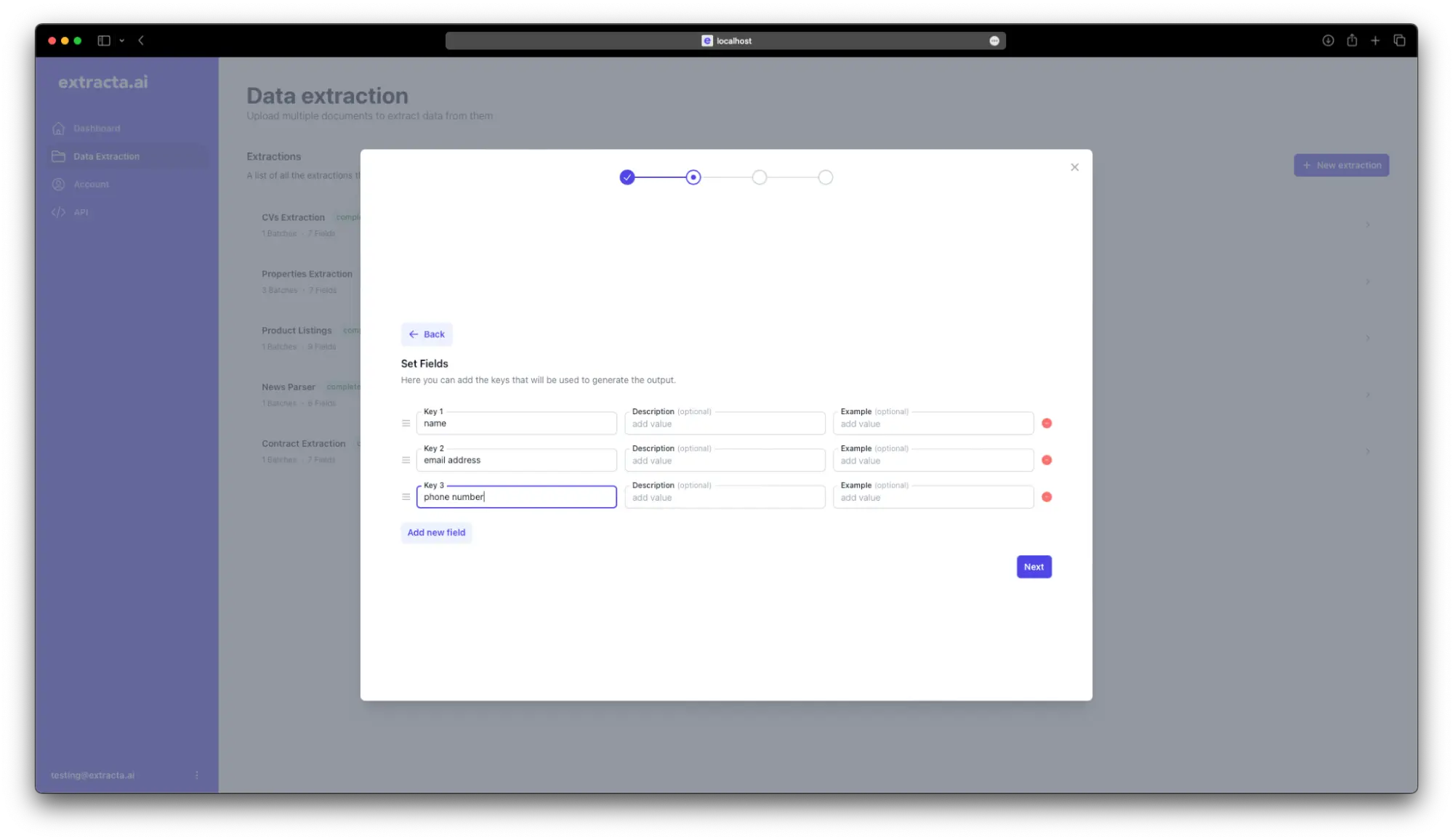Intelligent Data Extraction: How does it work?

This introduction will explore the practical steps involved in setting up and deploying intelligent data extraction systems, including selecting the right tools, integrating them with existing databases, and training the systems to recognize specific information. We will also highlight case studies across industries like finance, healthcare, and retail where intelligent data extraction has led to significant time savings, reduced human error, and enhanced analytical capabilities.
Intelligent Data Extraction

Intelligent data extraction is a method that utilizes artificial intelligence to automatically identify and extract important information from digital documents. Unlike traditional data capture, which often requires manual input and is prone to errors, this approach uses algorithms that learn from data patterns to improve accuracy over time. This capability makes it particularly valuable in handling a variety of document types and formats, from scanned images to complex PDFs, without needing predefined templates.
This technology primarily relies on Artificial Intelligence to understand the context of the data it processes. By recognizing text within a document, intelligent data extraction tools can differentiate between data like dates, names, invoice numbers, and much more. As these tools scan documents, they not only capture data but also classify and organize it, enabling businesses to streamline operations and focus on more strategic tasks.
What are the benefits of Intelligent Data Extraction?
Here are some of the key benefits that intelligent data extraction brings to organizations:
- Time Savings: Reduces the amount of time employees spend on manual data entry, allowing them to focus on more critical tasks.
- Error Reduction: Minimizes human errors in data processing, ensuring higher accuracy and reliability in the output.
- Cost Efficiency: Lowers operational costs by automating routine tasks, which can also decrease the need for extensive staff training.
- Data Accessibility: Makes data more accessible and searchable, enhancing the ability to quickly locate and use specific information.
- Scalability: Easily scales to handle increased data volumes without significant additional resource allocation, supporting business growth.
How does it work?

Traditionally, data extraction relied heavily on optical character recognition (OCR) combined with natural language processing (NLP) to interpret and extract information from documents. This method often required extensive training of the models to accurately understand and categorize data, which could be both time-consuming and error-prone, especially with complex or poorly formatted documents. The process involved manually setting parameters and continuously adjusting them to improve accuracy, a task that demanded significant effort and expertise.
The latest approach in data extraction has shifted towards using Intelligent Document Processing (IDP) and Large Language Models (LLMs), which offer a more sophisticated solution. These technologies leverage advanced AI algorithms that do not require the extensive pre-training typical of older systems. IDP systems utilize LLMs to understand context, semantics, and the structure of data within a document more effectively. This method significantly enhances accuracy and efficiency, as the system can adapt to new document types and data formats with minimal human intervention, streamlining the data extraction process for businesses of all sizes.
What type of documents could be automated?
Intelligent data extraction systems are highly capable of processing a variety of specific document types used in business and administrative functions:
- Invoices: Capture details like supplier information, purchase dates, and itemized charges to streamline accounts payable.
- Contracts: Extract key clauses, dates, and contractual obligations to aid in compliance and negotiation.
- Receipts: Pull transactional data for financial tracking and expense management.
- Resumes: Gather candidate information such as educational background, work experience, and skills for recruitment processes.
- Bank Statements: Identify transaction details, account balances, and financial summaries for personal or corporate finance management.
- Shipping Documents: Extract shipping details, product descriptions, and logistic information to optimize supply chain operations.
What tool to choose for Intelligent Data Extraction?

When searching for the best tool to handle intelligent data extraction, it's crucial to choose one that is both effective and easy to use. After evaluating various options, we found that Extracta.ai stands out as one of the best choices on the market. This platform utilizes the latest advancements in Intelligent Document Processing (IDP) and Large Language Models (LLMs) to offer unmatched accuracy in extracting data from both structured and unstructured documents. One of the key advantages of Extracta.ai is that it requires no prior training of a machine learning model. This means it works 'out of the box,' providing immediate results without the need for extensive setup or customization.
Extracta.ai is highly adaptable, allowing users to either create their own templates or use pre-existing ones, making it suitable for virtually any type of document. Whether you are integrating it via its straightforward API for seamless workflow automation or using its web platform, Extracta.ai offers flexibility in how it’s deployed. New users can take advantage of a free trial that allows up to 50 pages of processing, giving a real taste of its capabilities before committing financially. After the trial, the service operates on a pay-as-you-go basis, ensuring you only pay for what you use, making it cost-effective for businesses of all sizes.
How to use the tool?
Using Extracta.ai is straightforward and user-friendly, designed for anyone to get started without hassle. First, create a free account on the Extracta.ai platform to tap into the 50-page free trial, which allows you to test the tool's capabilities directly with your documents.

Once set up, you can begin an extraction project by uploading a batch of files—whether they're contracts, invoices, or any other document type. Extracta.ai processes these files, extracting data according to your specified template, and presents the results in a table format. For convenience, you can export this data directly into an Excel file, making further analysis and reporting significantly easier.
Additionally, the same functionalities available on the web platform are also accessible through Extracta.ai's API, providing flexibility for those who prefer to integrate this service directly into their existing systems. This option is ideal for businesses looking to automate data extraction processes seamlessly within their software environments, enhancing productivity without disrupting existing workflows.
Conclusion
Intelligent data extraction represents a significant step forward in how we handle information. It offers a robust solution for the challenges of manual data management, providing precision and efficiency that manual processes simply cannot match. As this technology continues to evolve, it promises even greater improvements in data accuracy and processing speeds.
